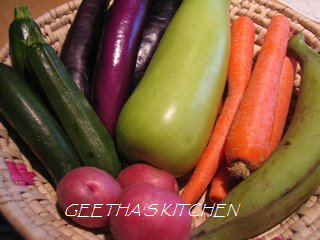Chole Pindi (Fragrant Chick Peas Stew With Salad)

Chole Pindi with Salad, Broccoli, and Roti This chole reminds me of the ugly duckling; it looks brown and not as robust as choles with the ripe red tomatoes. But one taste will convince you that it is a glorious swan! Another reminder that one should not judge anything just by its appearance alone! This dish can be prepared with the white chick peas also known as ' Kabuli Chana ' or Garbanzo Beans or the Indian brown ones known as Bengal Gram or Kala Chana . The freshly roasted spices transport the simple chick peas to another dimension altogether, mmm !! Do include the ghee if at all possible because it adds its incredible inimitable flavor. Since it is made without garlic or onions, it is a no-tears recipe fit for special occasions and festivals which call for Satvic dishes too. Now that I have perfected this chole , it has become one of our favorites! Chole Pindi is gluten free and dairy free if the ghee is omitted. Chole canbe oil free also if ...











